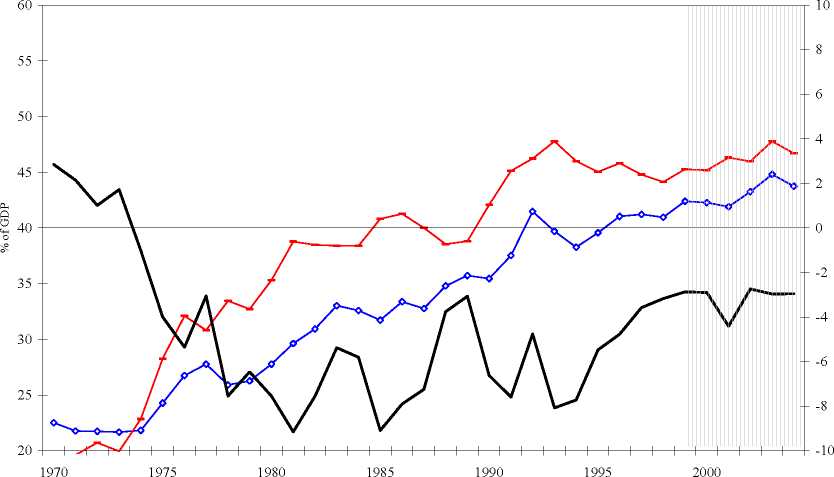Figure 5.1 (continued)
Portugal

I Revenues - Expenditures Balance ∣
Source: AMECO database, updated on 4 April 2005. The shaded area indicates the start of EMU.
These budget developments cannot be separated from economic conditions. The balance
can slip out of the control of fiscal authorities by higher than expected expenses on
unemployment benefits and transfers, or less than budgeted revenues, owing to automatic
stabilisers. Figure 5.2 compares some measures of the output gap and cyclically adjusted
balances computed by the European Commission and the OECD, as well as a trend series
retrieved from directly applying a Hodrick-Prescott filter on the raw series.70
The start-up of the EDPs to these countries seems justified on account of worsening
structural balances. In all countries, economic conditions improved considerably at the
onset of EMU and the overall deficit was notably reduced as a result. But the reversal of
positive output gaps laid out the structural weakness of the balance in France, Germany
and Portugal. Expenditures exceed average revenues over the cycle. In contrast, Spain
presents an entirely different picture. The budget has been brought close to balance, and
is even in slight surplus. A constant spending share has been matched by gradually rising
tax revenues.
The smoothing parameter has been set at 6.25, adjusting with the fourth power of the observation
frequency ratio to the annual frequency of the data (Ravn and Uhlig, 2002).
123
More intriguing information
1. Transfer from primary school to secondary school2. The name is absent
3. Modeling industrial location decisions in U.S. counties
4. Long-Term Capital Movements
5. The name is absent
6. Investment in Next Generation Networks and the Role of Regulation: A Real Option Approach
7. The name is absent
8. Rural-Urban Economic Disparities among China’s Elderly
9. A Computational Model of Children's Semantic Memory
10. Spectral calibration of exponential Lévy Models [1]